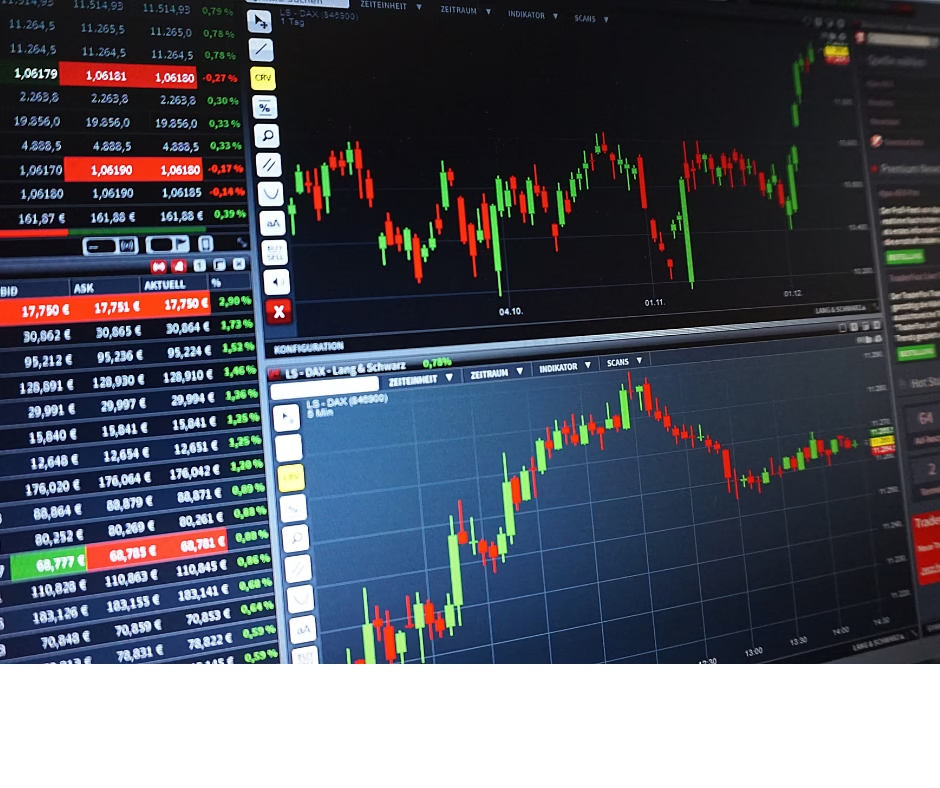Challenges and Risks in Quantitative Trading
Quantitative trading, often called “quant trading,” revolutionized how financial markets operate. It leverages mathematical models, statistics, and algorithms to execute trades systematically, often without human intervention. This approach minimizes emotional biases and maximizes efficiency. However, it is not without significant challenges and risks. Understanding these aspects is vital for traders, investors, and institutions engaged in this domain.
This blog explores the challenges and risks in quantitative trading in detail, providing insights into how these issues arise and strategies to mitigate them.
1. The Foundation of Quantitative Trading
Quantitative trading relies on data-driven approaches to identify and execute trades using mathematical models and algorithms. It involves collecting and analyzing market data, developing predictive models, backtesting strategies on historical data, automating trade execution, and continuously optimizing performance. This systematic method minimizes human biases and leverages technology to gain an edge in financial markets. Quantitative trading uses mathematical and statistical models to identify trading opportunities and execute trades. The process often involves:
- Data Collection and Analysis: Gathering historical and real-time market data to build and test models.
- Model Development: Designing algorithms to identify patterns, trends, or arbitrage opportunities.
- Backtesting: Testing the model’s performance on historical data to validate its efficacy.
- Execution: Automating trades based on signals generated by the model.
- Monitoring and Optimization: Continuously evaluating and refining the model to adapt to changing market conditions.

While the foundation appears robust, numerous challenges arise at each step, potentially undermining a strategy’s success.
2. Challenges in Quantitative Trading
Quantitative trading faces several challenges despite its systematic and data-driven nature. These include reliance on accurate and complete data, avoiding overfitting in model development, and adapting to changing market conditions. Execution risks like slippage, latency, and market impact can undermine profitability, while technological issues such as system failures and cybersecurity threats pose additional risks. Furthermore, traders must navigate market volatility, liquidity crunches, and evolving regulatory landscapes, all while addressing ethical concerns like flash crashes and algorithmic market manipulation. Successfully overcoming these challenges is crucial for long-term success in this field.
2.1 Data Challenges
Data forms the backbone of quantitative trading. Without high-quality data, even the best algorithms can fail.
- Accuracy and Completeness:
Errors in historical data can mislead model development. Incomplete datasets fail to capture crucial market nuances. - Data Lag:
Delays in real-time data can result in outdated signals, especially in high-frequency trading (HFT). - Survivorship Bias:
Many datasets exclude companies or assets that no longer exist (e.g., bankrupt firms), leading to over-optimistic model results. - High Costs:
Access to premium datasets for niche markets or proprietary indicators can be prohibitively expensive for smaller firms.
2.2 Model Development and Assumptions
The success of quantitative trading hinges on the robustness of the underlying models.
- Overfitting:
Overfitting occurs when a model is excessively optimized to historical data, capturing noise rather than genuine patterns. Such models perform poorly in live markets. - Simplistic Assumptions:
Models often rely on assumptions such as constant volatility or normal distributions, which rarely hold in real-world markets. - Lack of Generalization:
A model that works well in one market regime may fail in another, especially during periods of extreme volatility or crises.
2.3 Execution Risks
Execution challenges can significantly impact profitability.
- Slippage:
The difference between the expected and actual execution price, particularly for large trades, erodes profits. - Market Impact:
Large or frequent trades in illiquid markets can shift prices unfavorably. - Latency Issues:
Delays in receiving data or executing trades can be catastrophic, particularly in HFT, where milliseconds matter.
2.4 Technological Challenges
Quantitative trading relies on cutting-edge technology, making it vulnerable to several risks.
- System Failures:
Hardware malfunctions or software bugs can disrupt trading, leading to financial losses or missed opportunities. - Algorithmic Errors:
Faulty logic or coding errors in trading algorithms can trigger unintended trades, amplifying losses. - Cybersecurity Threats:
As trading systems store sensitive data and intellectual property, they become prime targets for hackers.
2.5 Market-Related Risks
Quantitative trading strategies are not immune to traditional market risks.
- Volatility:
Sudden price swings can disrupt models that assume stable market conditions. - Liquidity Risks:
During market stress, liquidity dries up, making it difficult to execute trades without significant price impact. - Regime Changes:
Markets evolve over time due to shifts in macroeconomic conditions, regulations, or participant behavior. Models based on past data may fail to adapt.
2.6 Regulatory Challenges
Regulatory compliance is critical but challenging for quant traders operating in multiple jurisdictions.
- Evolving Regulations:
New rules, such as restrictions on high-frequency trading or algorithmic strategies, can render certain models obsolete. - Cross-Border Complexities:
Trading across multiple markets involves navigating diverse regulatory frameworks, increasing compliance costs. - Potential Legal Issues:
Algorithmic strategies might inadvertently trigger patterns perceived as manipulative, leading to regulatory scrutiny.
2.7 Ethical and Social Concerns
Quantitative trading often faces criticism for its perceived impact on broader markets and society.
- Market Manipulation Concerns:
Algorithms might exploit inefficiencies at the expense of retail investors, drawing criticism from regulators and the public. - Flash Crashes:
Algorithmic errors can amplify market volatility, as seen in events like the 2010 Flash Crash. - Job Displacement:
Automation in trading has reduced demand for traditional roles, raising concerns about employment in the financial sector.

3. Risks in Quantitative Trading
Quantitative trading involves various risks that can impact its effectiveness. Model risks arise from flaws in algorithms or assumptions, leading to poor performance during unexpected market conditions. Dependency on historical data may result in strategies that fail to adapt to future events. Competitive pressures, such as alpha decay and strategy crowding, reduce profitability as similar approaches saturate the market. Execution risks, including slippage and market impact, further erode returns. Additionally, technological dependencies expose traders to system failures and cyberattacks, while regulatory non-compliance or legal issues may lead to penalties. Managing these risks is essential for sustainable success.
3.1 Model Risk
Model risk arises from inaccuracies or flaws in the mathematical frameworks underlying trading strategies.
- Parameter Sensitivity:
Small changes in model parameters can lead to vastly different outcomes, increasing unpredictability. - Unanticipated Scenarios:
Models may fail to account for black swan events like pandemics or geopolitical crises.
3.2 Competition and Strategy Crowding
The popularity of quantitative trading has led to intense competition.
- Alpha Decay:
As more traders adopt similar strategies, profit opportunities diminish over time. - Strategy Crowding:
Excessive use of identical algorithms can lead to market inefficiencies or coordinated losses during downturns.
3.3 Dependency on Historical Data
Quantitative strategies rely on historical data to forecast future market behavior. This dependency has limitations:
- Inadequacy of Historical Data:
Past performance may not predict future results, especially during unprecedented events. - Biases in Data:
Historical data may reflect specific economic conditions that no longer apply.
3.4 Human Oversight
Despite automation, human involvement remains critical. Errors in oversight can amplify risks:
- Misinterpretation of Results:
Overconfidence in backtested results can lead to unrealistic expectations. - Operational Mistakes:
Incorrectly setting algorithm parameters or failing to monitor real-time performance can cause substantial losses.
4. Mitigating Challenges and Risks
Addressing the challenges and risks in quantitative trading requires a strategic and proactive approach. Effective data management, including the use of diverse and high-quality datasets, minimizes inaccuracies. Robust model validation, with extensive backtesting and regular updates, ensures strategies remain adaptive to changing markets. Investing in advanced technology reduces system failures and latency, while stringent cybersecurity measures safeguard sensitive data. Diversification across strategies and asset classes mitigates dependency on any single approach. Staying compliant with evolving regulations helps avoid legal risks, and continuous monitoring enables prompt intervention during unexpected events. These measures collectively enhance resilience and long-term success. To succeed in quantitative trading, it is essential to adopt robust strategies for managing risks and overcoming challenges.

4.1 Data Management
- Invest in high-quality data and regularly validate its accuracy.
- Use diverse datasets to minimize biases and improve model generalization.
4.2 Model Validation
- Test models extensively using in-sample, out-of-sample, and real-time simulations.
- Regularly update models to reflect evolving market conditions.
4.3 Technological Investments
- Employ redundant systems to reduce the impact of hardware or software failures.
- Implement stringent cybersecurity measures to safeguard systems and data.
4.4 Regulatory Compliance
- Stay informed about regulatory changes and engage legal experts to ensure compliance.
- Maintain transparent records to defend against allegations of market manipulation.
4.5 Diversification
- Avoid reliance on a single strategy or market. Diversify across asset classes, geographies, and timeframes.
4.6 Continuous Monitoring
- Use advanced monitoring tools to track real-time performance and detect anomalies.
- Establish clear protocols for intervention during unexpected events.
5. Conclusion
Quantitative trading represents the cutting edge of financial innovation, offering opportunities for systematic and efficient trading. However, it comes with unique challenges and risks that require careful management. From data quality and model development to execution risks and regulatory compliance, understanding these factors is essential for success.
By adopting robust practices for data management, model validation, technological investments, and risk mitigation, traders can navigate these challenges effectively. While the road to success in quantitative trading is fraught with difficulties, the rewards are substantial for those who persevere.
This detailed exploration of the challenges and risks in quantitative trading aims to equip traders, investors, and institutions with the insights needed to excel in this dynamic and competitive field.




